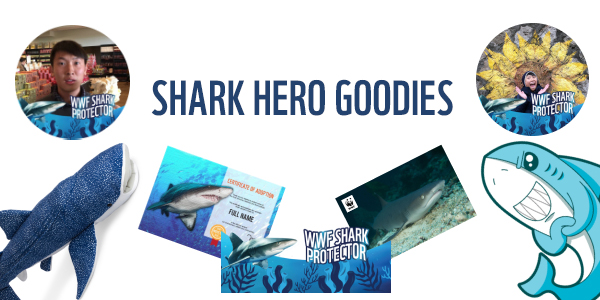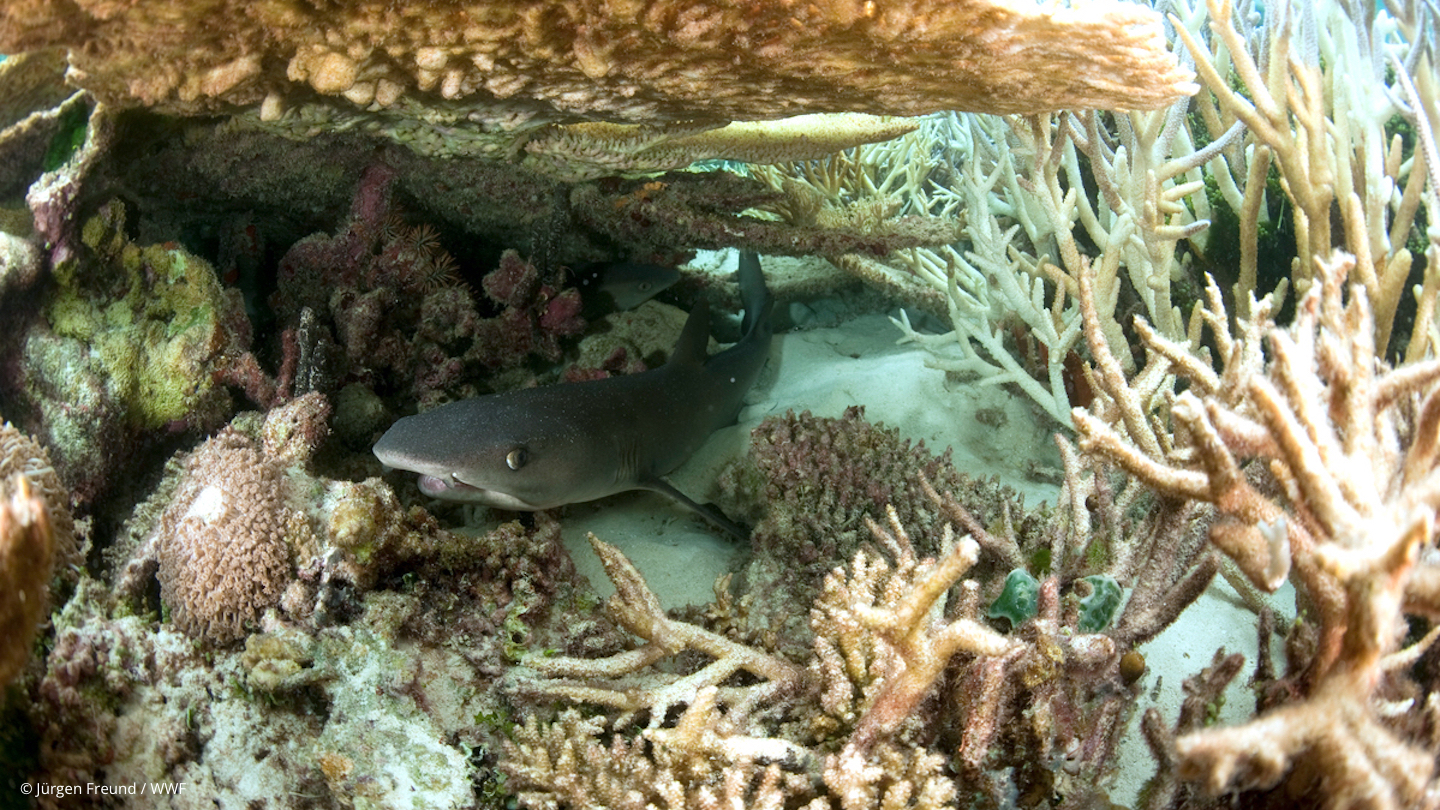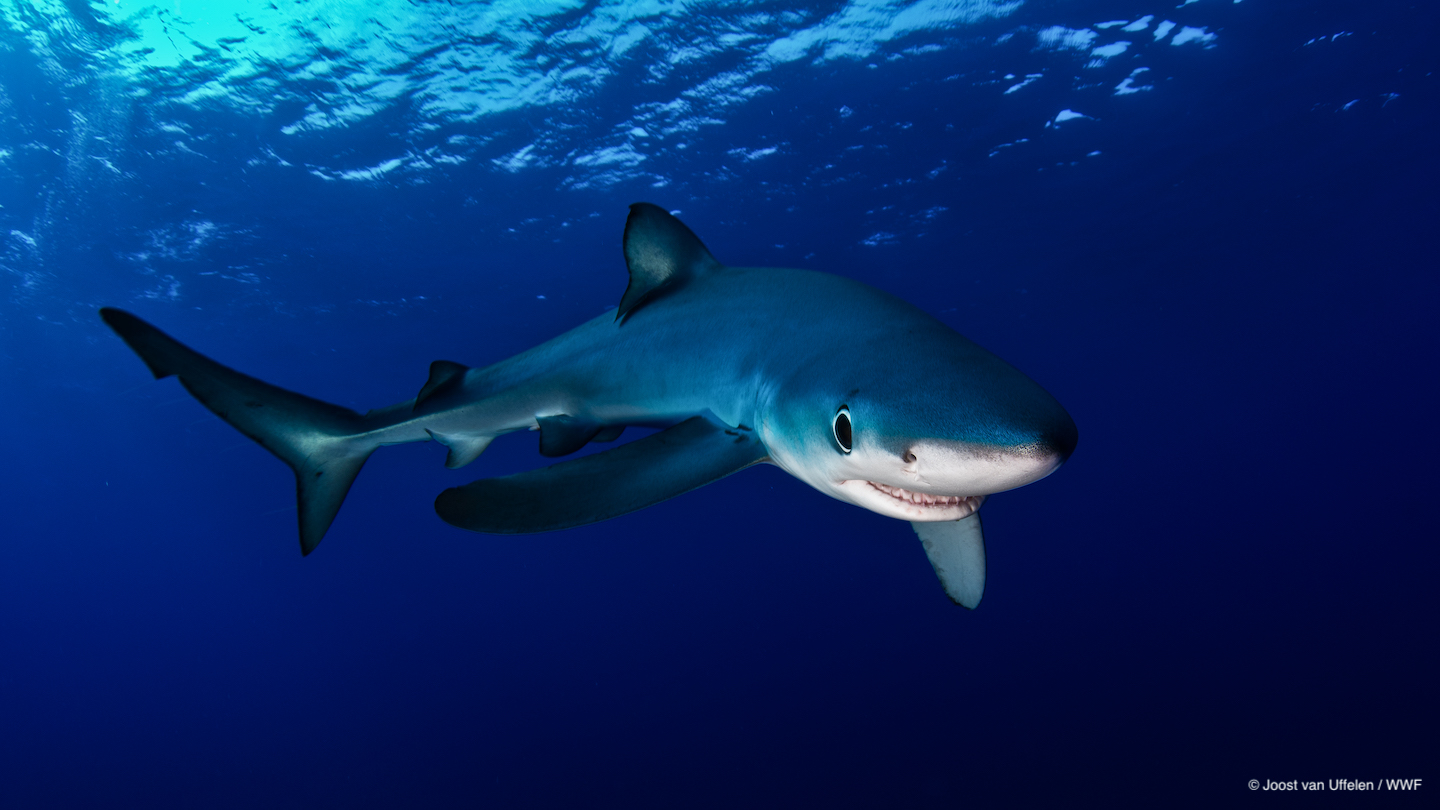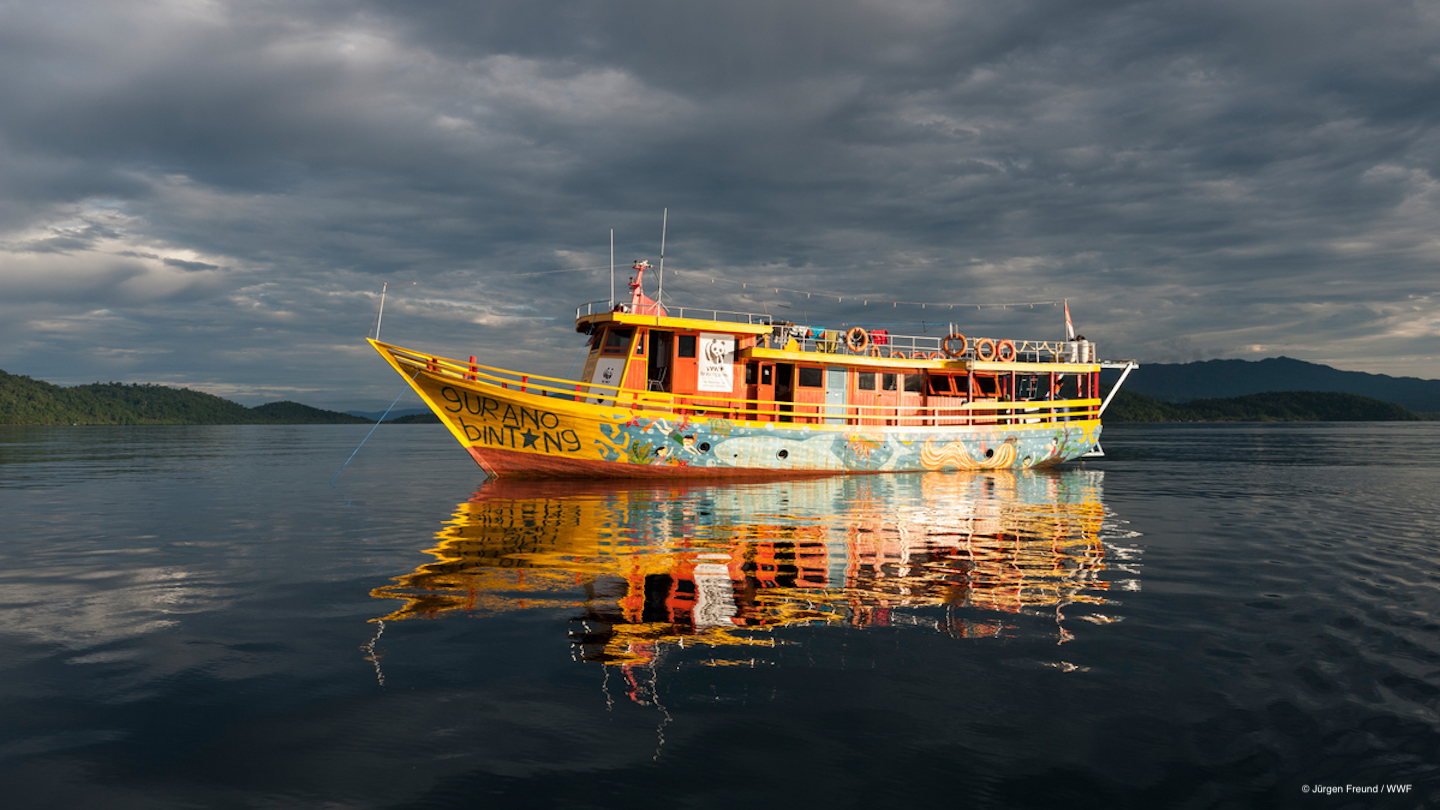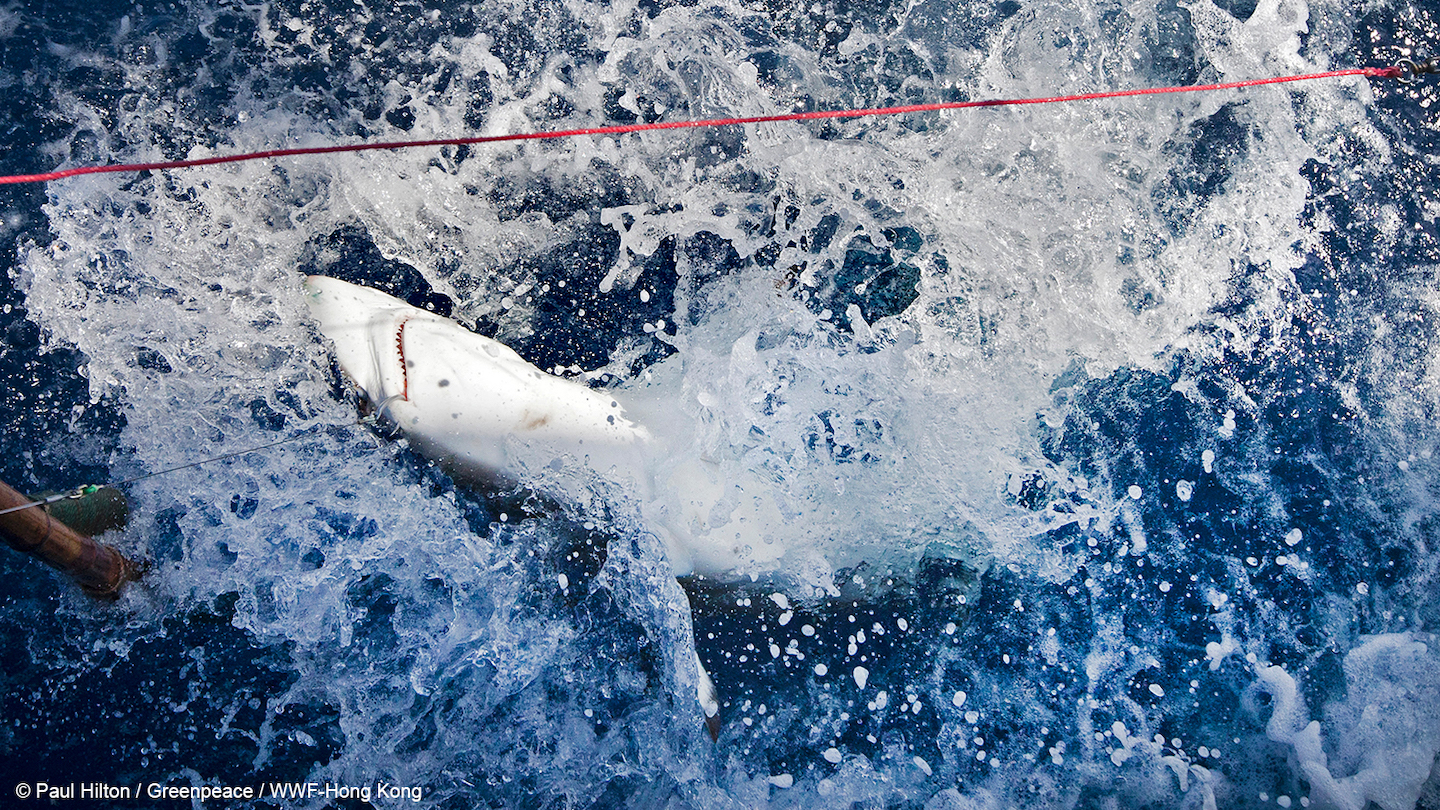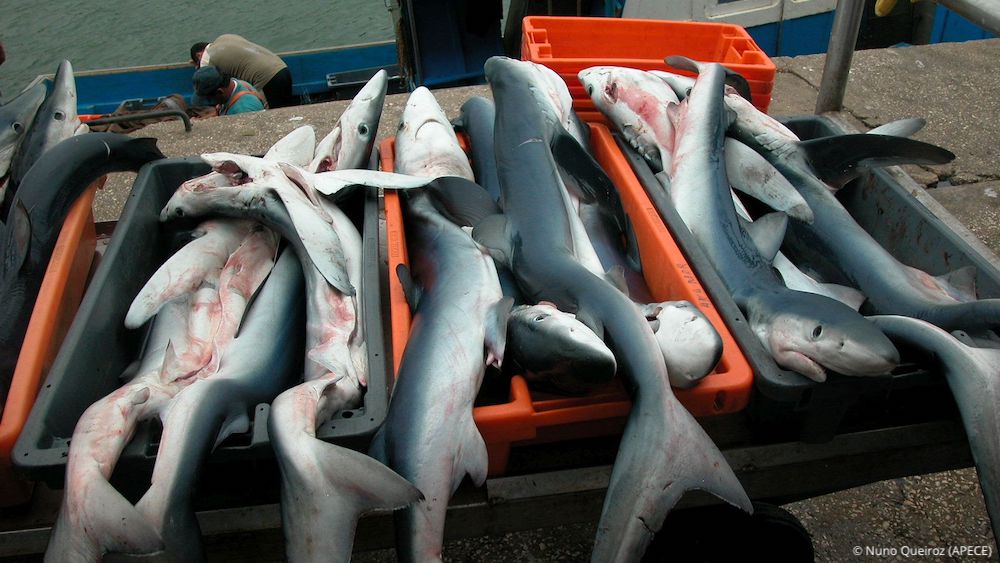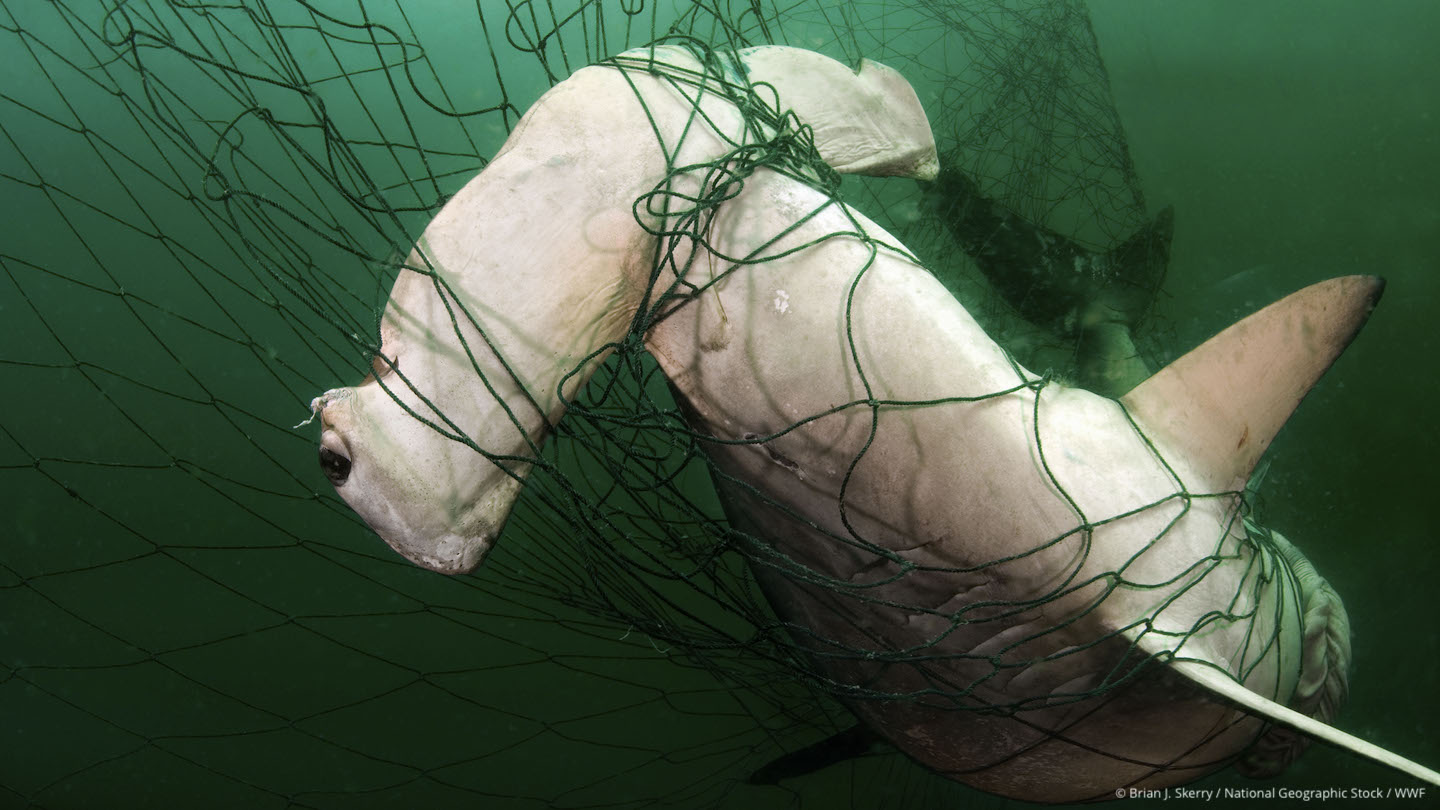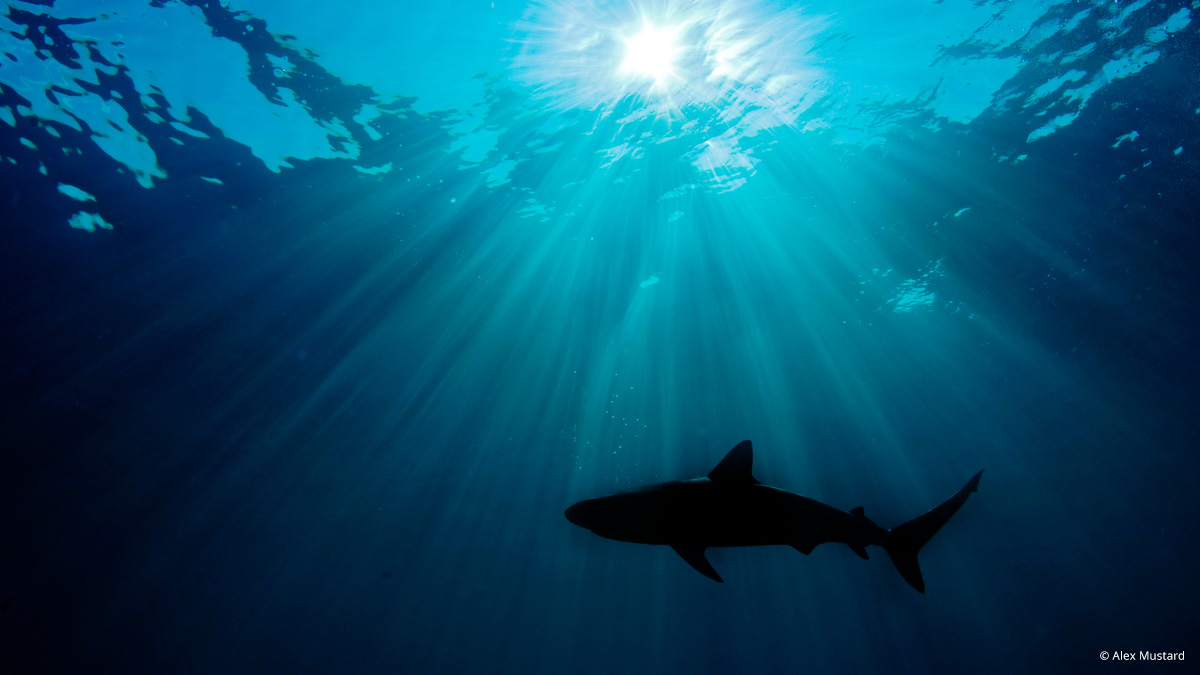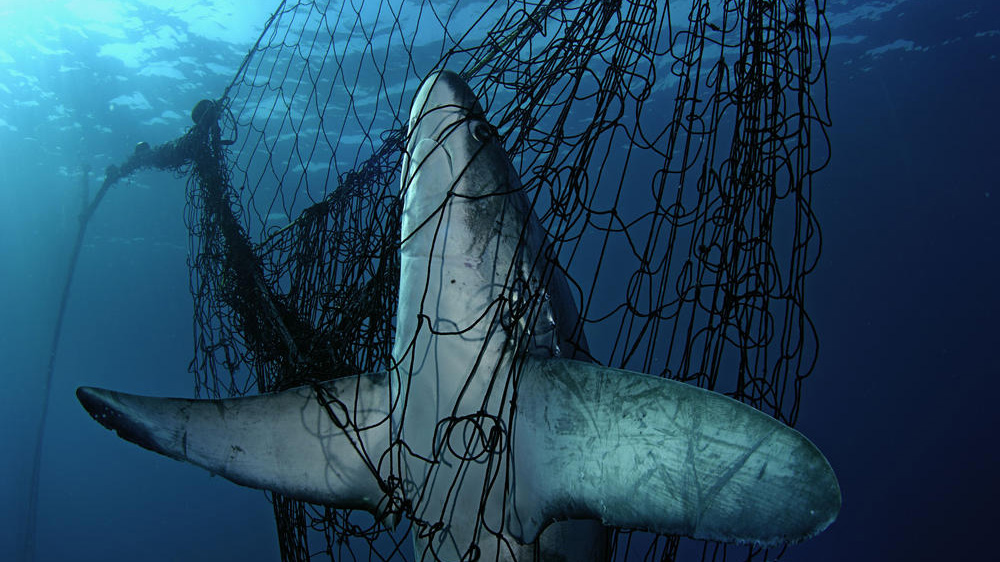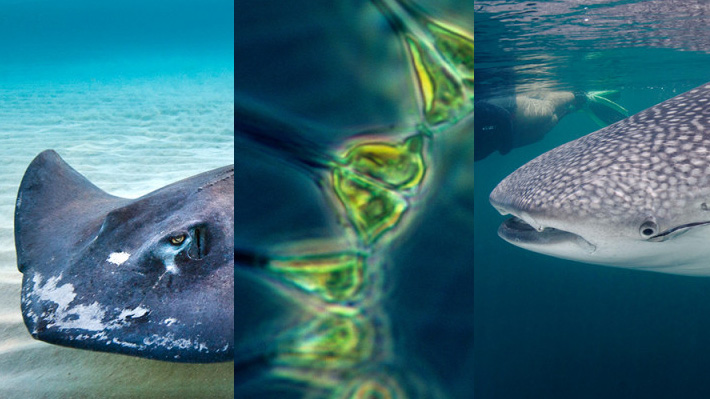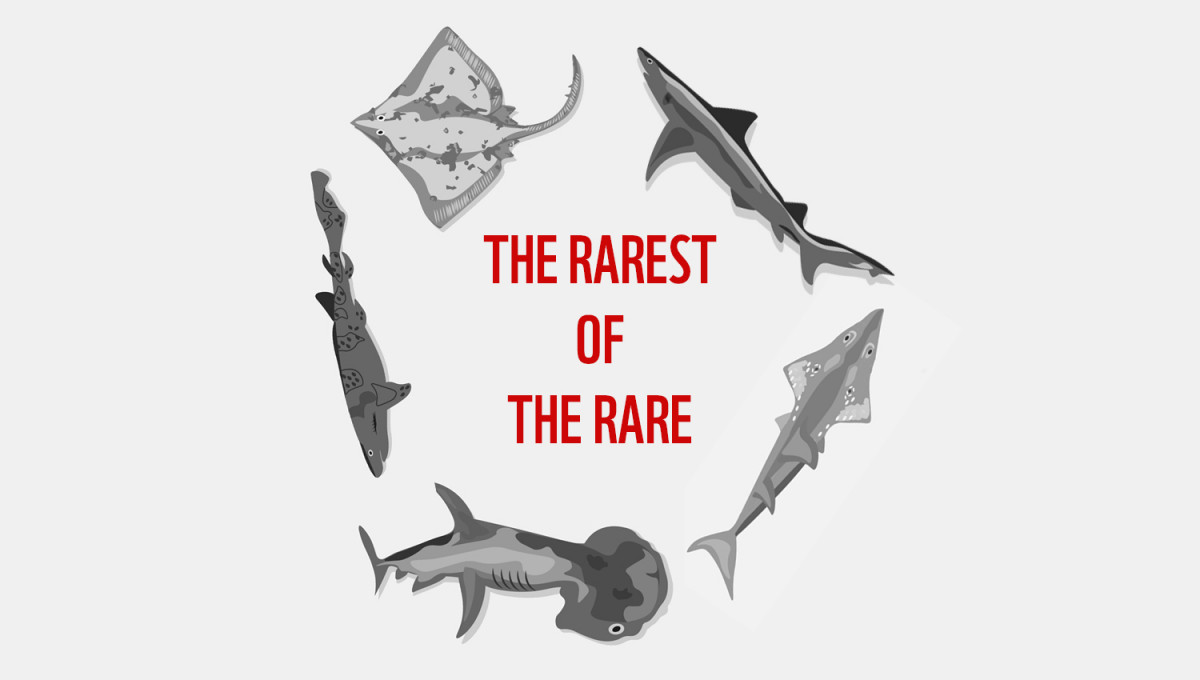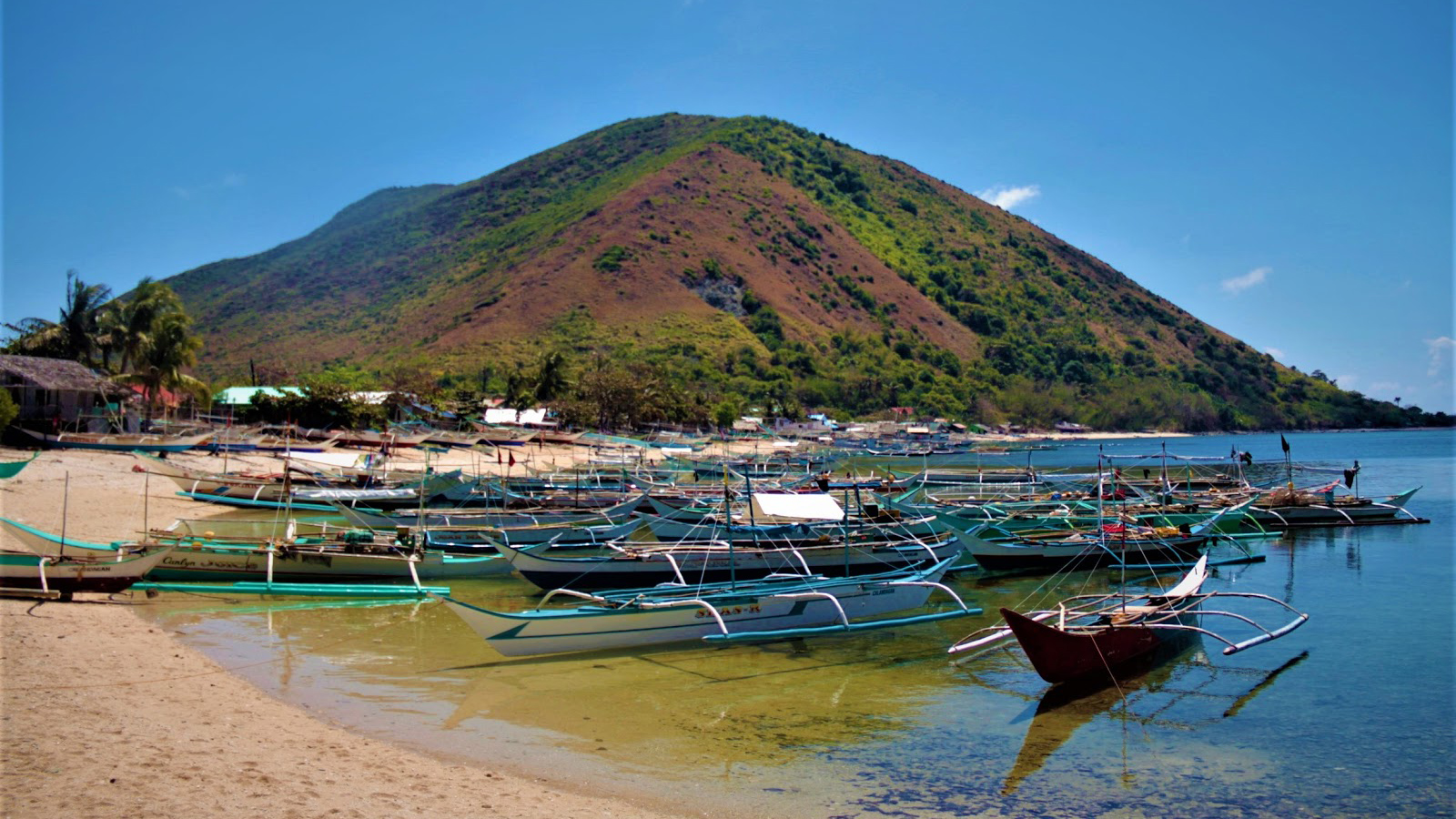UP TO 100 MILLION SHARKS ARE KILLED ANNUALLY
Nearly 30% of all known shark species are at risk of extinction. Their survival relies on you.
BECOME A SHARK PROTECTOR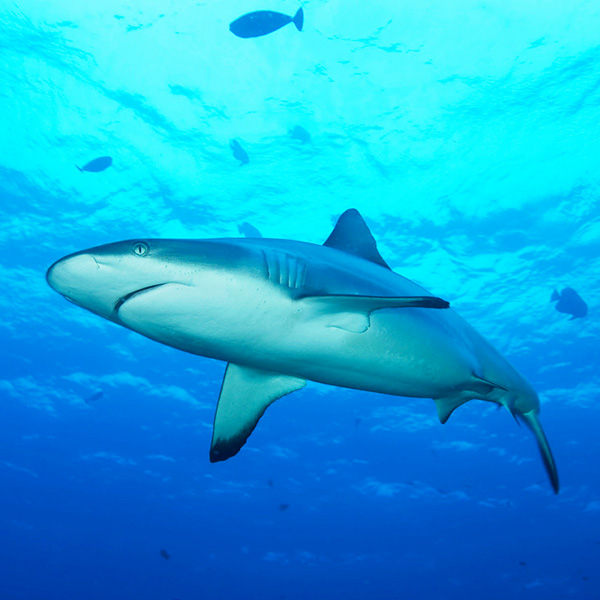
YOU CAN RECEIVE
-
Adoption e-Certificate
-
Live news from the field
-
Fun downloadables
-
Exclusive event invitations
-
Wildlife Origami paper
-
Wildlife Protector badge
-
GOTS-certified tote bag
-
Exclusive WWF plushie
PROTECTING SHARKS FROM EXTINCTION
Sharks play a key role in maintaining the delicate balance of marine life, making them critical to the health of our oceans and the people who depend on them. But currently, they are under huge threat of extinction mostly due to overfishing, but also habitat loss and destruction, and climate change.
As of 2021, 29% out of all known shark species are at risk of extinction globally. Some shark species have declined by more than 95% and have been wiped out in areas where they used to inhabit.
Why protect sharks?
Aside from balancing the ecosystem, their swimming patterns help distribute essential nutrients around the ocean. This is crucial for marine plants and phytoplankton—the basis of our marine food chain, and the ones who produce at least 50% of the oxygen we breathe!
When sharks die naturally, they also trap carbon in the depths of the ocean for thousands or even millions of years!
FACTS

TOTAL SPECIES
Over 500 known species

SPECIES THREATENED
153 species

WEIGHT
Up to 11 tons

FOOD
From molluscs, fish, to marine mammals

HABITAT
Seas and oceans, from the warm shallows of coral reef lagoons to the cold depths of the open ocean
TOP 20 SHARK CATCHERS (2007-2017)
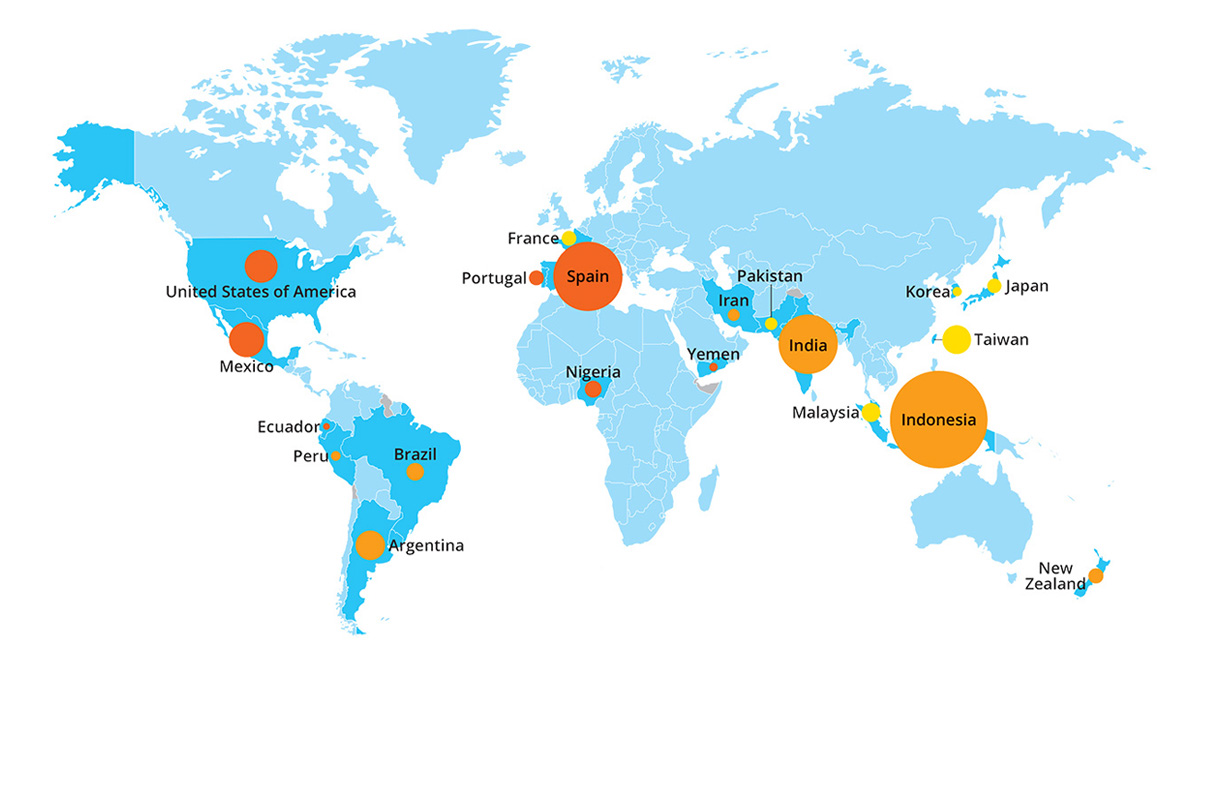
THREATS TO THEIR SURVIVAL
Overfishing is depleting shark populations worldwide, with open ocean longlines using hundreds if not thousands of hooks each catching the greatest volume of sharks globally. The demand for shark fins in East and South-East Asia and for shark meat globally are the main drivers of overfishing and population declines, however, sharks are sought for leather, liver oil and cartilage as well.
Bycatch could account for about half of global shark catches. Sharks are often caught by fishing gear set for other types of fish—such as tuna longlines, or gillnets. Fishers may be primarily targeting other fishes, and even when the sharks are required to be released, they may be dead when brought to the fishing boat, or die soon after release. Regardless of how sharks were caught, most of them will be consumed locally or traded domestically and their fins sold abroad.
The clearance of mangroves has a negative impact on shark species such as hammerhead sharks, whose young use these as nursery grounds. Besides that, the loss of living coral reefs due to illegal and destructive fishing practices, marine pollution, and climate change will reduce the amount of prey for sharks. Destructive fishing practices such as blast fishing, poison fishing, and gill nets are an ecological disaster— not only they kill various non-targeted species (including whales, dolphins, turtles) and other marine organisms, it also harms the structure of coral reefs.
HOW YOUR ADOPTION HELPS
As a Shark Protector, you are joining the fight to turn things around for sharks. Your support will help establish Marine Protected Areas (MPAs), increase research and monitoring efforts, empower local communities, and work with businesses in Singapore to implement a sustainable seafood supply chain.
By adopting a shark, you are also protecting the marine biodiversity, wildlife, and natural environments around them.
WHAT WE NEED IN THE FIELD...

Essential Kits

Training Kit

Research Tools

Field Mobility
JOIN OUR COMMUNITY
As part of our community, you will receive exclusive updates from the field, hear from conservation experts, get the latest shark conservation news, and many other membership perks!
FAQS
View all ▼-
How many sharks are at risk?Tens of million sharks are killed every year, and some populations have declined by more than 95%. Based on IUCN's assessment in 2021, nearly one-third of all known species of sharks faced extinction, mostly because of overfishing, and that figure is undoubtedly higher today.
-
What is overfishing?Overfishing means catching marine species faster than they can reproduce, resulting in declining populations of those species.
-
What is bycatch?Bycatch is the incidental capture of non-target species during fishing process. It affects many species, including sharks, dolphins, and marine turtles. It is also one of the greatest threats to the marine environment, wasting a valuable natural resource and causing dramatic declines in populations of many marine species.
-
What is shark finning?Shark finning is the practice of cutting off shark’s fins and discarding the body of the shark back to the water. This practice is not only unethical and cruel—because the shark may still be alive when thrown overboard—but also unsustainable and wasteful given that only a small part of the animal that has already been killed or will eventually die is being used.
-
Which countries consume the most shark fins/shark meat?The biggest consumers of shark fin are found in East and Southeast Asia, including China, Hong Kong SAR, Taiwan, Singapore, Malaysia, and Vietnam. The world’s largest consumers of shark meat are found in South America and Europe, with four major importers (and so consumers) including Brazil, Spain, Uruguay, and Italy.
-
What's WWF's position on shark finning?WWF is against finning of sharks and rays. This unethical, cruel, unsustainable, and wasteful practice has no place on our blue planet.
For existing fisheries that take sharks and rays, WWF supports the implementation of ‘fins-naturally-attached’ policy in an effort to push those fisheries towards sustainability. (‘Fins-naturally-attached’ means that fishers have to bring in whole sharks or rays with fins still attached to the body to the shore.) Implementing this policy helps with identifying species, which are being caught and generally makes it possible to monitor catches, supporting long-term management and conservation of sharks and rays. -
Is there an international strategy for conserving sharks?Yes, WWF have joined forces with TRAFFIC, WCS, the Shark Trust, Shark Advocates International and advised by the IUCN Shark Specialist Group, developed a global 10-year strategy to stop the declines of sharks and rays around the world.The goal of this global strategy is that by 2025, "the conservation status of the world’s sharks and rays has improved – declines have been halted, extinctions have been prevented, and commitments to their conservation have increased globally". To achieve this, an ambitious, holistic approach is required across four concurrent and interconnected strategies, which are:- Saving shark and ray species from extinction- Managing existing shark and ray fisheries for sustainability- Responsible trade in shark and ray products- Responsible consumption of shark and ray products.
-
What is CITES?CITES stands for the Convention on International Trade in Endangered Species of Wild Fauna and Flora. It’s an international agreement between governments to protect endangered plants and animals – ensuring the trade of them doesn’t threaten their survival.CITES works by subjecting international trade in specimens of selected species to certain controls. All import, export, re-export and introduction from the sea of species covered by the Convention has to be authorized through a licensing system.
-
Can the CITES process prevent shark extinction?While CITES is not the ‘silver bullet’ that will save all sharks and rays from extinction, it certainly can provide a driver to stimulate conservation efforts. A CITES listing on its own is no guarantee of greater protection for populations threatened by overfishing.
Bans on capture and trade can help, but ultimately need to be part of a package of measures that prevent unsustainable fishing mortality, and where necessary allow populations to recover. A dual approach of protecting critical habitats (such as establishing Marine Protected Areas) for the listed species and reducing their bycatch in multi-species fisheries in neighbouring areas has a lot to offer. This will continue to be a key area of focus for WWF in our efforts to support countries in implementing CITES for sharks and rays in years to come.
